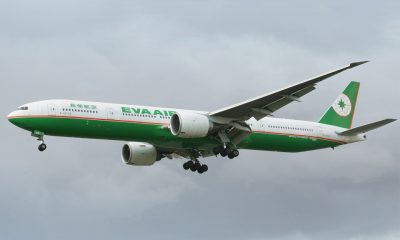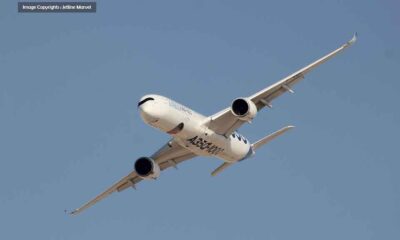Aerospace
Airbus hints that the A220-500 will be introduced at the Paris Airshow.

Recent sources claim that Airbus is taking real steps to improve the plane’s marketability against the 737 MAX. The A220-500 may be unveiled at the Paris Airshow, according to Airbus. It could face competition from the 737 Max 8 and Embraer E2.
The plan would entail two fronts: confirming the usage of the CFM LEAP1 engine and increasing the capacity of the A220 with the A220-300 variant.
Airbus is betting on the smallest narrowbody aircraft market that will be competing directly with the Embraer E2 and Boeing 737 max 8 segments aircraft. further, it is improving the aircraft cabin seats.
Airbus and CFM International to pioneer hydrogen combustion technology(Opens in a new browser tab)
The Pratt & Whitney PW1500G engine, which has experienced issues with availability, is the only one used by the A220 at the moment. Only the LEAP1-B, which is thought to be slightly less efficient but has reported fewer issues for its operators, is used to fly the Boeing jet.
Airbus SE may introduce a larger version of its A220 single-aisle airplane as early as next month, strengthening its portfolio versus Boeing Co. in the commercial aircraft market segment with the highest sales.
Indigo selects CFM engines to power its fleet of 310 new Airbus A320neo(Opens in a new browser tab)
The world’s largest aircraft manufacturer has long insisted that it is a matter of when rather than if the A220-500, an expanded version of its smallest commercial jet, will be produced. The larger model would pit the aircraft against Boeing’s most popular 737 Max 8.
Some potential customers of the aircraft, unlike Southwest Airlines, who selected the 737 MAX 7, would have a compelling argument for the A220 with LEAP1 engines.
Top 5 selling Narrow Body aircraft(Opens in a new browser tab)
To offer the CFM turbofan, Airbus simply needs to offer a range comparable to the PW rival’s, or around 3,400 nautical miles.
Airbus may use the A220-500 as a way to meet the high demand for the A320neo family, notably the A321neo, LR, and XLR, which offer a remarkable range of 4,700 nautical miles.

Aerospace
Airbus Reveals Innovative Hybrid Aircraft, Blending Plane and Copter Designs
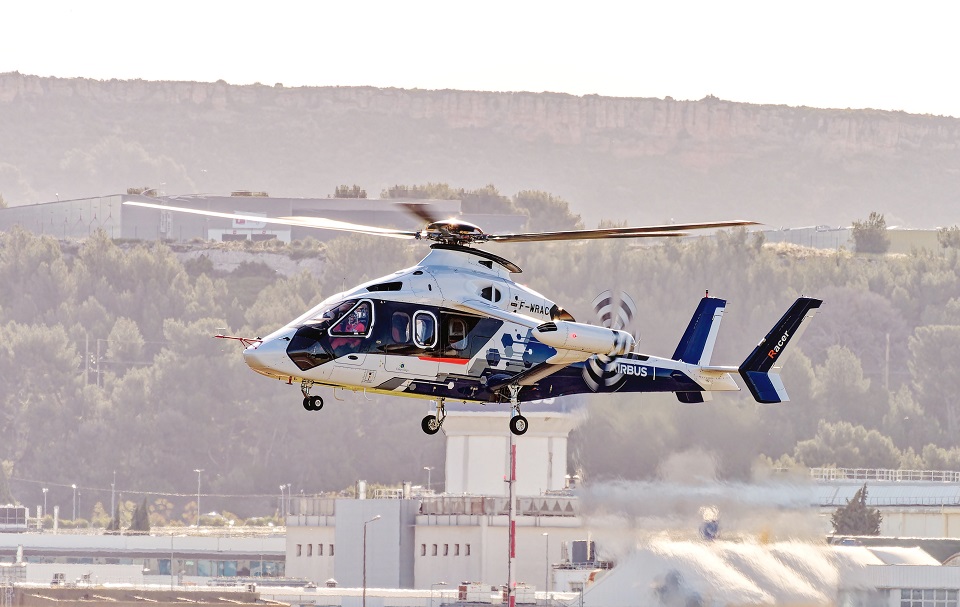
Airbus Helicopters has unveiled a groundbreaking innovation in rotorcraft technology with the introduction of an experimental hybrid aircraft, blending the features of a plane and a helicopter.
Named the Racer, this one-of-a-kind demonstrator model integrates traditional overhead rotor blades with two forward-facing propellers, aiming stability with speed. The primary objective behind this engineering marvel is to significantly reduce response times for critical missions such as search-and-rescue operations.
Priced at 200 million euros ($217 million), the Racer represents a pioneering leap in rotorcraft design, poised to revolutionize the industry. Beyond its immediate applications, including search-and-rescue missions, the Racer’s potential extends to military endeavors, aligning with NATO’s ongoing exploration of next-generation helicraft. However, the realization of such prospects hinges upon the alignment of future operational requirements.
Designed to operate at a cruise speed exceeding 400 km/h, the Racer demonstrator is meticulously engineered to strike a delicate balance between speed, cost-efficiency, and mission performance.
Notably, the aircraft targets a notable reduction in fuel consumption, aiming for a 20% decrease compared to contemporary helicopters of similar caliber. This feat is made possible through aerodynamic optimization and an innovative eco-mode propulsion system, developed in collaboration with Safran Helicopter Engines.
The hybrid-electrical eco-mode system allows for the temporary suspension of one of the two Aneto-1X engines during cruise flight, thereby contributing to a reduction in CO2 emissions. Moreover, the Racer seeks to address environmental concerns by focusing on lowering its operational acoustic footprint, showcasing its commitment to sustainability.
Building upon the success of Airbus Helicopters‘ X3 technology demonstrator, which previously pushed the boundaries of helicopter speed by achieving a remarkable 472 km/h, the Racer represents a significant evolution in aerodynamic configuration and technological innovation.
Aerospace
IndiGo to Order 100 Small Planes from Airbus, ATR, or Embraer
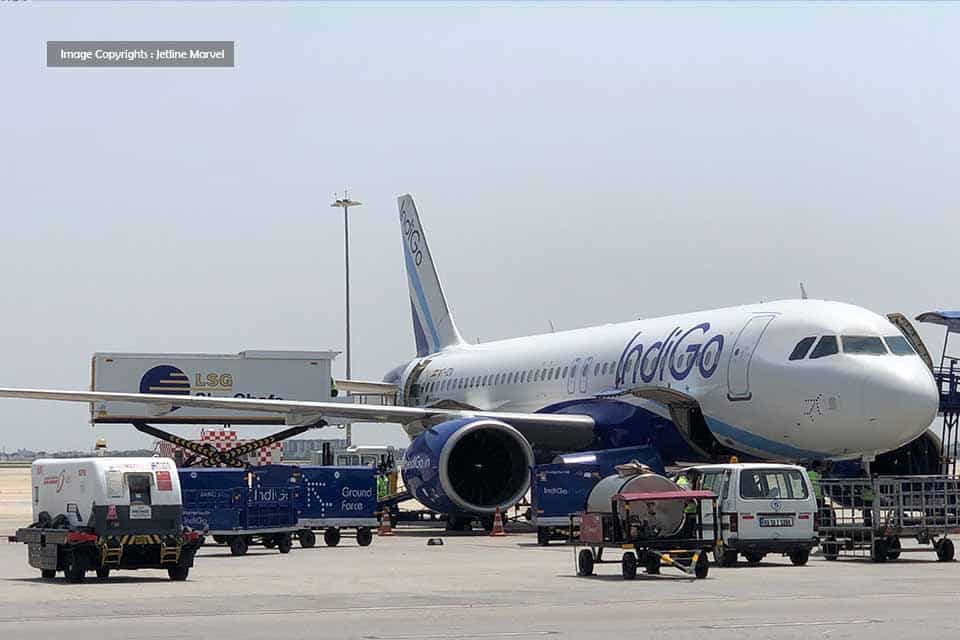
IndiGo, India’s leading airline, is in talks with three aircraft manufacturers to acquire a fleet of at least 100 smaller planes, aiming to bolster its regional operations, as per a report by the Economic Times.
The airline’s recent order of 30 A350 aircraft underscores its strategic focus on expanding its reach with wide-body and long-range planes, targeting increased traffic from various regions across the country.
Now, the focus shifts to enhancing connectivity on shorter routes within India’s domestic network, tapping into the regional airline market. IndiGo is currently in discussions with ATR, Embraer, and Airbus for this purpose. With 45 ATR-72 aircraft already in operation, accommodating 78 passengers each, and five more expected this year, the airline is leaning towards ATR, although Airbus A220 and Embraer’s E-175 remain contenders.
Having established itself as a key operator of Airbus A320 aircraft, with over 450 on order for future delivery, IndiGo continues to strengthen its fleet.
This move follows closely on the heels of the recent agreement to purchase 30 Airbus A350-900 aircraft, a significant step that will facilitate the airline’s expansion both domestically and internationally. This deal marks IndiGo’s entry into the wide-body aircraft segment, further solidifying its position in the market.
IndiGo’s strategy includes penetrating tier 1, 2, and 3 cities within India’s regional aviation market using smaller aircraft.
As India maintains its status as the world’s fastest-growing aviation market, airlines are striving to meet the escalating demand amid challenges faced by aircraft manufacturers in meeting production targets.
Aerospace
India is currently in the process of developing its own 72-seater aircraft.
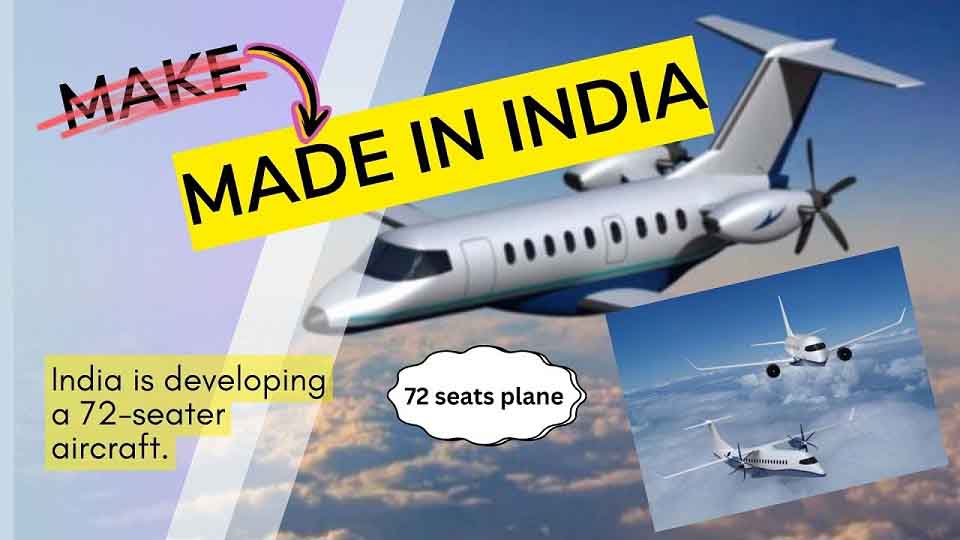
India stands on the cusp of pioneering its aircraft development, a potential reality in the near future. With the Indian aviation market poised to become one of the world’s top five largest markets, there’s a burgeoning demand for carriers like Indigo, Air India, and Akasa. Together, they’ve placed orders for over 1400 aircraft from Boeing and Airbus, marking one of the highest orders in the aviation industry.
‘Made in India’ passenger aircraft.
To transform the dream of a ‘Made in India’ passenger aircraft into reality and propel the local aerospace ecosystem, India requires a comprehensive National Aerospace Policy. Notably, Airbus and Boeing have yet to establish final aircraft assembly lines (FALs) within India, spurred by the significant orders received.
India has exerted considerable pressure to establish assembly lines domestically, mirroring the success of similar initiatives abroad. With its aviation market growing at an unprecedented rate, India boasts the largest order book for new aircraft, estimated at a staggering $70 billion over the next decade. Existing airports bustle with travelers while new ones are either under construction or in the planning phase.
The timeline for India to realize the Prime Minister’s vision of a Made in India commercial aircraft hinges on various factors. Leveraging its prowess in exporting IT services and aerospace technologies, India is poised for the next stage of development.
The success rate of China’s C919 and ARJ21.
In the realm of commercial aerospace manufacturing, Europe and the US have long held the reins, but China has emerged as a formidable contender in recent years. China’s journey began in 2002 with the ARJ21, a regional jet, and later the C919, a larger narrow-body aircraft. While the ARJ21 encountered delays and is seen as a modest achievement, the C919 boasts over one thousand orders, marking a significant success.
Both programs heavily rely on foreign technologies sourced from global original equipment manufacturers (OEMs), underscoring the importance of collaborations and creating an appealing environment for foreign companies to operate within China.
Indian HAL has 80 years of history.
India, too, boasts a rapidly growing aerospace sector that traces its roots back to pre-independence times, predating China’s endeavors by over 60 years. Hindustan Aeronautics Ltd (HAL), initially established as Hindustan Aircraft Ltd in 1940, spearheaded this journey. Given its early establishment, India was poised to become a major player in aerospace manufacturing.
HAL shoulders much of the responsibility for developing aircraft for defense purposes, including the TEJAS, attack and multirole helicopters, trainer aircraft, and notably, the Dornier D228, a passenger version aircraft representing a significant breakthrough for the Indian Aerospace Industry. Demand for helicopters is also on the rise, further showcasing India’s potential in the aerospace domain.
India’s aviation market Demand.
One drawback in the defense sector is the inherent uncertainty surrounding government budgets and delays in allocating funds for helicopter purchases. On the civilian front, aircraft demand remains consistently high, especially when they meet passenger needs and receive regular approvals from authorities.
India’s aviation market is distinct, calling for unique aircraft programs. With a high density of flyers, there’s a prevalent preference for short-haul flights from rural areas to major cities. As the air travel network expands to Tier-2 and Tier-3 cities, the number of operational airports is expected to surge from the current 140 to 230-240.
The demand for smaller aircraft, particularly for serving Tier 1-3 cities, is paramount for airlines. While the Dornier aircraft has been utilized for some routes, its availability limitations and noise levels have raised concerns. Jet planes emerge as preferable options for Indian travelers due to their efficiency and comfort, aligning better with the needs of airlines.
Establishing a sustainable aircraft program requires long-term commitment and substantial risk capital, often necessitating government support akin to what’s observed in developed markets. For instance, COMAC, over its lifetime, received significant state-related support ranging from $49-72 billion, while Airbus, over the years, obtained $22 billion from the EU.
Encouraging private investment is crucial for fostering growth in the aerospace sector and nurturing indigenous aircraft development in India. Such initiatives could significantly bolster the country’s aviation industry and enhance its self-reliance in this critical domain.
Indian Regional Jet (IRJ).
Introducing the Indian Regional Jet (IRJ), a cutting-edge project led by India’s National Aerospace Laboratories (NAL) and set to be manufactured by Hindustan Aeronautics Limited (HAL). This regional airliner aims to redefine air travel with its design, offering a capacity of 80–100 passengers. The base model, known as the RTA-70, will boast 80–90 seats while distinguishing itself with a cost that’s 20 percent lower than its global counterparts.
Development is well underway, with plans for a 90-seater variant expected to take flight by 2026. This next-generation aircraft promises impressive specs, including a range of 1,350 nm (2,500 km), and requiring a take-off and landing field length of 900m (2,950 ft). With dimensions of 28.6m in length and a wingspan of 29.4m, it reaches a service ceiling of 30,000 ft and cruises at 300kt, all while meeting Stage 4 noise criteria.
Saras Aircraft.
Meanwhile, NAL’s innovative spirit extends to the NAL Saras, another project in the works. Already, prototypes like the Mark1 and its successor, the second version dubbed ‘Mark 2,’ are pushing boundaries. The Saras Mark 2 showcases versatility, offering ranges of 600 km with 19 passengers, 1,200 km with 14 passengers, and an impressive 2,000 km with eight passengers. With a top cruise speed exceeding 600 km/h and an endurance of six hours, it’s a game-changer.
Weights
Max. take-off : 7600 kg (16755 lb)
Operating empty wt. : 5100 kg (11244 lb)
Max. fuel weight : 1832 kg (4039 lb)
Max. pay load : 1710 kg (3770 lb)
Power plant
SARAS is powered by two Pratt and Whitney Canada.
PT6A-67A turbo-prop engines (flat rated to 1200 shp)
driving 2.6 m diameter 5 bladed constant speed propellers
at 1700 rpm in a Tractor configuration.
Main dimensions
Span : 18 m (59.05 ft)
Length : 17.3 m (56.8 ft)
Height : 5.5 m (18 ft)
Performance (ISA)
Take-off distance : 820 m (2690 ft)
Landing distance : 665 m (2182 ft)
Max. rate of climb : 10 m/s (1980 ft/min)
Max. range* (19 pax) : 750 km (405 nm)
Max. range* (10 pax) : 2350 km (1270 nm)
Ferry range* : 2400 km (1295 nm)
Max. cruise speed : 485 km/hr (260 Kts)
Endurance : 6 hours . With 45 min reserve
Equipped with propeller engines initially, the Saras is poised for future upgrades to jet engines if project requirements align. NAL’s ambition shines through in its cost-effective approach, targeting ₹50 crore per unit for the Saras Mk2, undercutting the ₹55 crore Dornier 228 with its unpressurized cabin and altitude restrictions. Anticipating government support, NAL aims to secure orders for 50-60 units to ensure manufacturing viability, with an initial order of 15 aircraft from the Indian Air Force potentially expanding to 120–140 units in the coming years.

